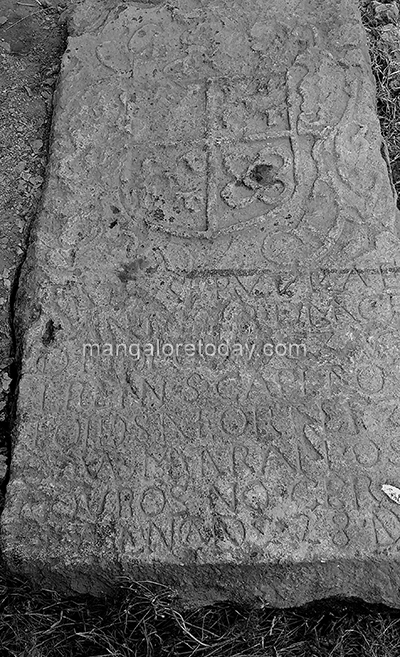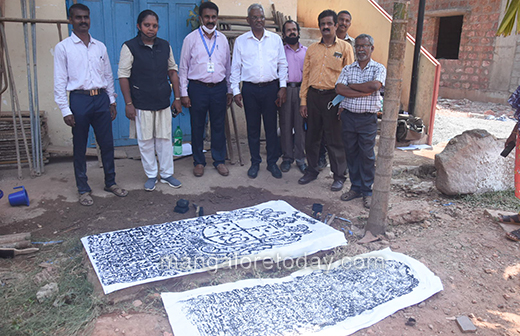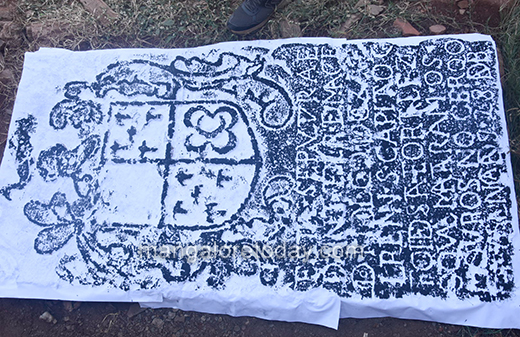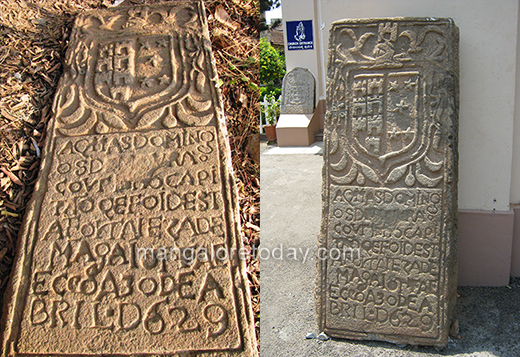
Two stone inscriptions discovered reiterate historicity of Mangaluru
Mangalore Today News Network
Mangaluru, March 16, 2021: Two stones bearing inscriptions were found while excavating the land for constructing the skill development centre under Mangaluru Smart City, last year, 2020. It was brought to the notice of the dean only on Saturday, March 13, 2021, by an observant student on the campus. Some stones with inscriptions may have already been cleared from the premises it seems. The two stones are observed to have Kannada and Portuguese inscriptions.



Dr A. Senthil Vel, professor and dean (Fisheries), College of Fisheries, at Hoige Bazar Campus pointed out that a third year student showed some pictures of the inscriptions on his mobile phone on March 13. Immediately a message was to the Prime Minister’s Office who in-turn sent the details to Director General ASI, V. Vidyavathi, who directed the team from Mysuru led by Dr K Muniratnam, director to look into it.
On Monday March 15, 2021, an estampage was done to obtain the exact replica of an inscription using maplitho paper and ink; the copy is preserved in the office and published in the annual report of Indian Epigraphy which will get comments from experts worldwide. The team is expected to visit Adyar and Udyavara to examine stone inscriptions found there recently. Several inscriptions belonging to the Alupa dynasty are found in the coastal region that gives scope for research, the experts said. The Kannada one probably belongs to the 11th century and Portuguese inscription may be a 16th century one. The Kannada inscription could be a donation given to someone. But it is difficult to find out details, because the top four lines are eroded. The purpose of the inscription is not clear, it is said.
The team concluded that the other inscription is Portuguese one after observing an emblem and letters. Only after decipherment work is completed, the exact details can be provided. The area is part of ancient Mangaluru and close to the Mangaladevi Temple which is of a very early era and ’Allupa Kings’ held sway. Also according to local historians this area is prominent from 1500s AD for a Portugese Fort and settlement, in 2009 a similar Portuguese tombstone inscription was found just about 100 feet or so away and the details follow.
Portuguese tombstone of 1629 AD found in 2009: A large stone inscription with fairly clear; The stone reiterates the Portuguese presence at the old site opposite the confluence of the two rivers and the Arabian Sea. In March 2009, a history buff, was in search of information along the river and was at ’Haleya Kote - Bolar’, near the river edge, in the deserted old Bunt compound between the Joy Land English School and Mukhya Prana Temple, he noticed a solid granite stone under some bushes near an old well. The spot is about a 100 feet behind where the present stone was discovered. Due to the caked mud and vegetation around it was not too clear, it surely looked like an ancient European relic. Bringing it to the notice of authorities was a difficult task, such is the apathy, later it was cleaned and photographed.

In April, 2009, local media published the ‘discovery’. The finder brought it also to the notice of his friend, historian Alan Machado-Prabhu and others. Decoding the inscriptions with the help of international experts; the stone turned out to be the tombstone of Domingos de Mourao Coutinho, the captain of the Portuguese fort of Mangalore, who died on April 30, 1629. “It would have been installed over his grave which in all probability was located within the first fort church, the ’Nossa Senora de Rosario’, known as the ‘poyeda igerji’ or factory church, which was pulled down at the start of the 1784 captivity of Christians by Tipu Sultan.” It is seen as an existing relic of the first church and fort which at least since 1568 formed a part of Mangalore’s Rosario church history and brings it to perspective. An expert assessment of this stone is that it bears the court of arms of the Mourão Coutinho family, prominent nobles of 17th century Northern Portugal. It is a tombstone which bears the clear legend “Here lies Domingos de Mourão Coutinho, Captain of Fort Mangalore. He died on April 30, 1629.” It seems to have once lay in or near the first church built in Mangalore, within the fort of Sao Sebastio. Later this 1629 tombstone with the help of the then parish priest of the Cathedral and active well wishers of the area with difficulty was brought to the Cathedral premises, with a view of preserving it. So there it still lies now in 2021.